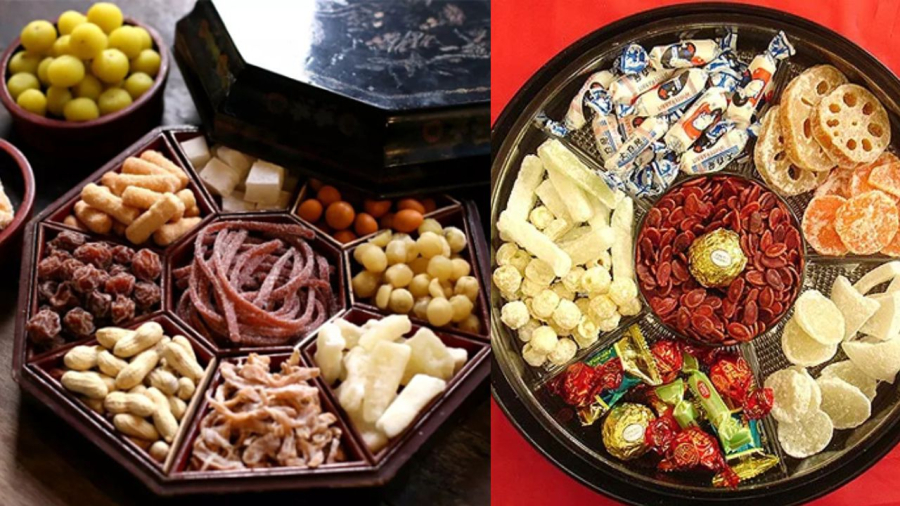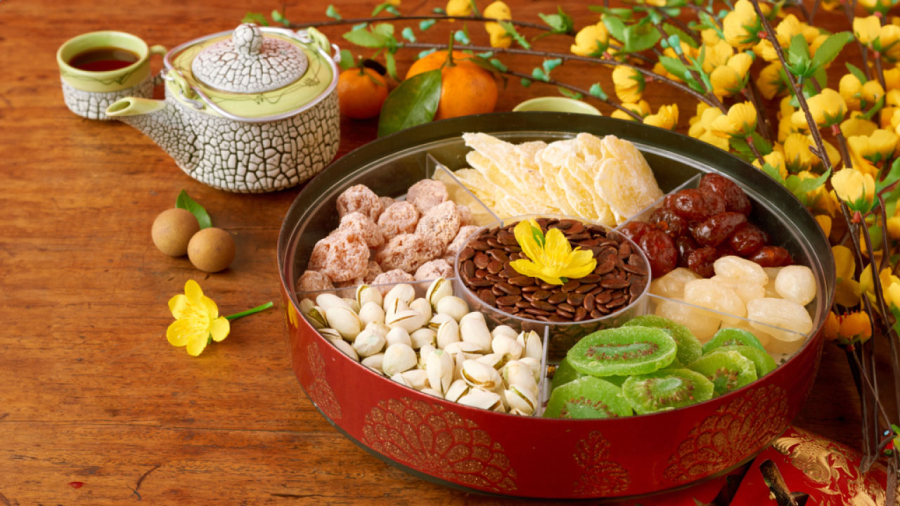During Lunar New Year, most families have mứt (candied fruits) as a traditional dish. The types of mứt can vary, from bí (winter melon) to dừa (coconut), dứa (pineapple), xoài (mango), hạt (seeds), gừng (ginger), and more. Mứt is made by soaking fruits in sugar, and it is an essential part of the Tet flavor for many families.
Mứt is made through a process of marinating and caramelizing sugar. If exposed to hot weather or humid winter air, it can easily melt or become moist, which affects the taste and can even pose health risks. Therefore, it is crucial to properly store mứt to ensure its quality and dryness.

During Tet, when the digestive system is overwhelmed by an abundance of nutritious and fatty foods, such as deep-fried and pan-fried dishes, eating melted mứt may not guarantee good quality and can lead to potential health problems.
Consider the following tips for storing mứt to keep it fresh and dry:
– Store mứt in sealed containers, such as glass or plastic jars. Only open the jar when consuming the mứt and close it immediately afterward to avoid prolonged exposure to air, which can cause moisture.
– When putting mứt in the jar, make sure it is airtight, and sprinkle a layer of sugar on top of the mứt. The sugar layer serves to absorb moisture, helping the mứt to remain moist-free and last longer.

– Avoid storing mứt in the refrigerator, as it can become moist when taken out.
– Keep the mứt in a dry and well-ventilated room, avoiding moisture and storing it at room temperature.
– For certain types of mứt, such as dừa (coconut) and bí (winter melon), they can be stored for up to 2 months. However, different types of mứt may have different storage methods, and their shelf life can vary from 2 to 6 months.
After caramelizing, let the mứt cool down before storing. When mứt melts, carefully check for any fly larvae attached to it, and avoid consuming it or re-caramelize it before eating. Place the mứt on a hot pan and let it cool down before storing it to prevent moisture absorption or steaming inside the jar.



































